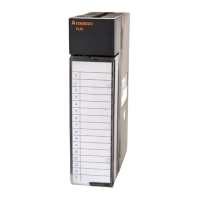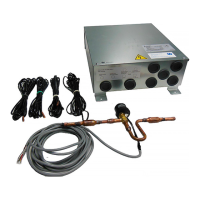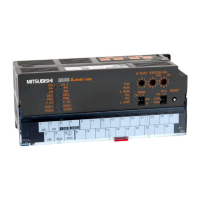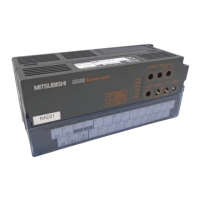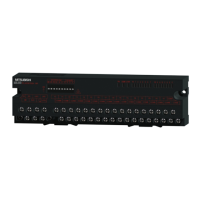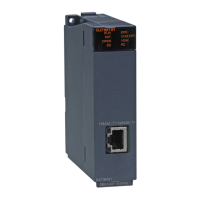3. POSITIONING SIGNALS
3 − 38
REMARK
(Note): See the following sections for details on M-codes and reading M-codes.
• M-code.........................Section 8.2
• M-code reading............Appendix 4.1
(11) Torque limit value register (D14+20n).........Data from the PCPU to the SCPU
This register stores the value for the torque limit imposed on the servo
system. The default value of 300% is stored in this register when the power to
the servo system is turned on or at the leading edge of the PLC READY signal
(M2000).
(12) Constant-speed control data set pointer (D15+20n)......... Data from the PCPU
to the SCPU
This pointer is used in constant-speed control when specifying positioning
data indirectly and substituting positioning data during operation.
It stores a "point" that indicates which of the values stored in indirect devices
has been input to the PCPU when positioning is being repeated by using a
repeat instruction (FOR-TIMES, FOR-ON, FOR-OFF).
Use this pointer in conjunction with the PLC set pointer (controlled by the user
in the sequence program) - which indicates the extent to which the positioning
data has been updated by the SCPU - to confirm which positioning data is to
be updated.
The use of the data set pointer and PLC set pointer for constant-speed control
is explained here using the example servo program below.
CPSTART2
Axis 1
Axis 2
Speed D200
FOR-TIMES
D202
ABS-2
Axis 1, D0
Axis 2, D2
ABS-2
Axis 1, D4
Axis 2, D6
ABS-2
Axis 1, D8
Axis 2, D10
ABS-2
Axis 1, D12
Axis 2, D14
ABS-2
Axis 1, D16
Axis 2, D18
ABS-2
Axis 1, D20
Axis 2, D22
ABS-2
Axis 1, D24
Axis 2, D26
ABS-2
Axis 1, D28
Axis 2, D30
NEXT
CPEND
<K 0>
9
*
1
2
3
4
5
6
7
8
9
0
1
2
3
4
5
6
7
Pass point
Point
Poins are set in the order
FOR-TIMES
FOR-ON
FOR-OFF
NEXT
0, 1, 2, etc., starting from the
head of the sequence defined
by the following repeat
instructions :
The input of positioning data to the PCPU on updating the positioning data in
indirect devices D0 to D6 when 2-axes constant-speed control is executed
using the servo program shown above is described overpage.

